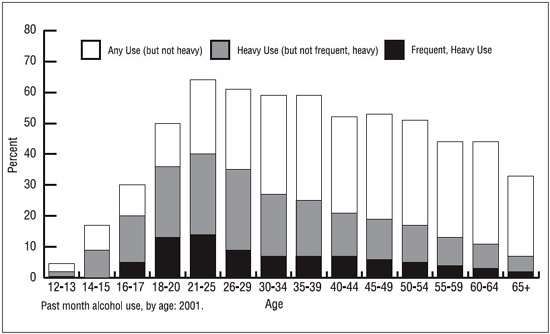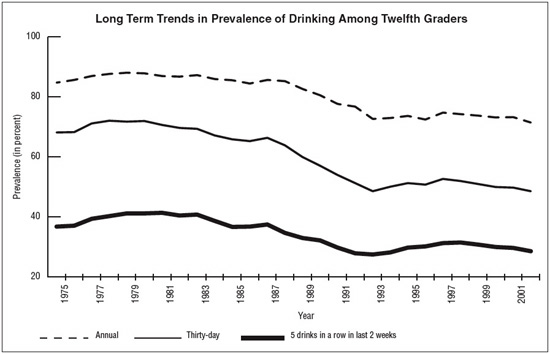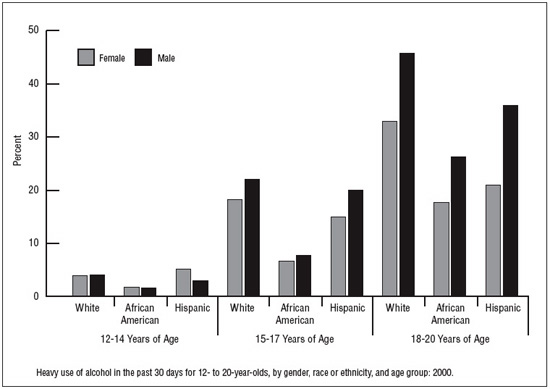Underage drinking
Alcohol use by young people is dangerous, not only because of the risks associated with acute impairment, but also because of the threat to their long-term development and well-being. Traffic crashes are perhaps the most visible of these dangers, with alcohol being implicated in nearly one-third of youth traffic fatalities. Underage alcohol use is also associated with violence, suicide, educational failure, and other problem behaviors. All of these problems are magnified by early onset of teen drinking: the younger the drinker, the worse the problem. Moreover, frequent heavy drinking by young adolescents can lead to mild brain damage. The social cost of underage drinking has been estimated at $53 billion including $19 billion from traffic crashes and $29 billion from violent crime.
More youth drink than smoke tobacco or use other illegal drugs. Yet federal investments in preventing underage drinking pale in comparisons with resources targeted (mostly to youths) at preventing illicit drug use. In fiscal 2000, $71.1 million was targeted at preventing underage alcohol use by the U.S. Departments of Health and Human Services (HHS), Justice, and Transportation. In contrast, the fiscal 2000 federal budget authority for drug abuse prevention (including prevention research) was 25 times higher, $1.8 billion; for tobacco prevention, funding for the Office of Smoking and Health, only one of several HHS agencies involved with smoking prevention, was approximately $100 million, with states spending a great deal more with resources from the states’ Medicaid reimbursement suits against the tobacco companies.
Respect your elders
Youth drink within the context of a society in which alcohol use is common and images about the pleasures of alcohol are pervasive. Efforts to reduce underage drinking, therefore, need to focus on adults and must engage the society at large.
Early learners
Drinking alcohol begins for some youth at an age when their parents are still worried about how much Coke to let them have, and it spreads like a virus as kids age. By age 15, one of five has tried alcohol, and by age 18, three of ten have engaged in heavy drinking (more than five servings at a time).
A persistent problem
The prevalence of drinking among 12th graders peaked in the late 1970s, declined slowly during the 1980s, and has remained essentially constant since then. In 2003, almost half of 12th graders reported drinking in the previous 30 days, compared with 21.5 percent who used marijuana and 26.7 percent who smoked in the same period.
Gender equity we can do without
More girls than boys begin drinking at a very early age, and although the boys soon catch up, the number of girls who drink— and who drink heavily—is close to the number of boys.





